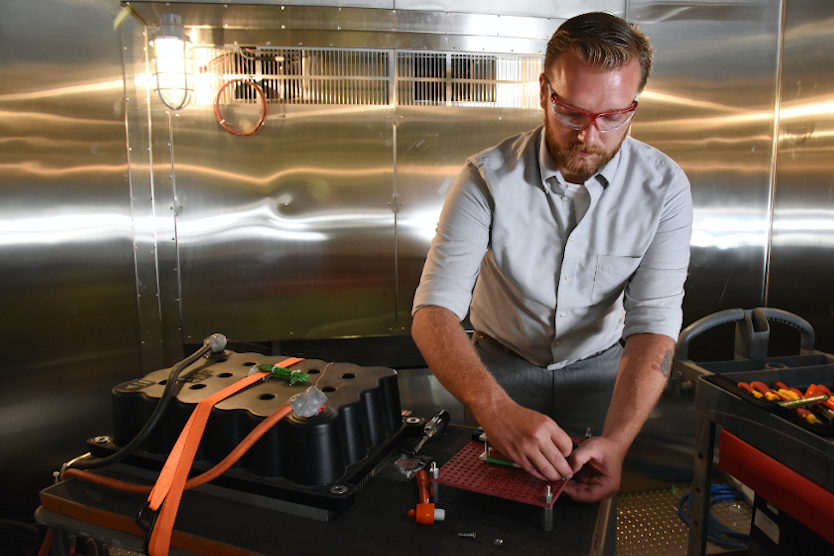
Scientists at the BAM collaborate with manufacturers of carbon composites, the Helmholtz-Zentrum and TU Berlin, in order to find an alternative anode material for batteries which are both safe and efficient.
© Unsplash
The global search for alternatives to lithium-ion (li-ion) batteries is on. Until very recently, lithium energy storage systems were considered to be the only viable technology for larger electronics from electric vehicles through to energy storage and industrial applications. But the production of li-ion batteries is inherently problematic: extracting lithium from salt water is an expensive and dirty business that takes a heavy toll on the environment, and global resources are limited anyway.
In theory, sodium-ion batteries could provide the solution: sodium is extracted from salt, which is widely available and cheap, and they are a “drop-in” technology which means they can be integrated into standard battery production processes. The main problem is the instability of the positive pole, or anode, in the system, which is typically made of hard carbons. During the reaction, not only do lithium ions start to accumulate at the anode but the electrolyte also starts to penetrate the carbon, leading to loss in capacity and failure.
This has led scientists at the Federal Institute for Materials Research and Testing (BAM), in Berlin, to collaborate with manufacturers of carbon composites as well as scientists at the Helmholtz-Zentrum and Technische Universität Berlin, in order to find an alternative anode materials which are both safe and efficient. It sounds straightforward but it is anything but, as Tim-Patrick Fellinger, who heads up the project at BAM, explains in a press release:
"It is very complex to find the ideal structure for these novel materials. We want to develop customised composite materials for this purpose that offer space for as many sodium ions as possible, but keep electrolytes out," he says. "If we are successful with our concept, it would mean a big innovation push for sodium ion technology as a whole."
The joint project is funded by the Federal Ministry of Education and Research (BMBF) as part of the "Battery 2020 Transfer" funding.


